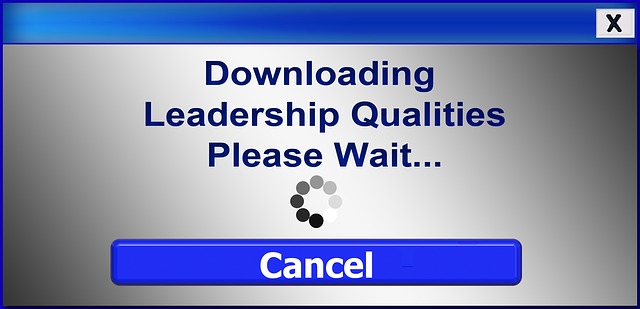
Last fall, I unexpectedly took on the electronic resources management (ERM) role at my university. Consequently, I had to teach myself–on the fly–how to manage 130+ electronic resources, along with a budget of several hundred thousand dollars. My initial six months focused on finances, licensing, and workflows rather than access, discoverability, or other key issues. So here are some life-saving tips for all you new e-librarians, because I know you didn’t learn this in library school!
Let’s start, as always, with the users.
Evaluate user needs.
Are you new at your job? Then begin by conducting a needs assessments, formal or informal. Check the programs and course offerings to make sure they still align with the e-resources for which you pay. Seek out faculty, colleagues, and students to get a sense of what resources they assign, use, or see used. Pull usage statistics from each database–and be sure to cross-reference this vendor data with web analytics because vendor data can be self-serving to the point of fictitious. Do your users use each resource enough to justify its cost? And they do really require the level of access you’re paying for? If not, can the resources be marketed and usage increased? And if there’s just no market, can those funds be reallocated and more relevant sources acquired?
Be budget-conscious.
Budgets are a huge consideration for any e-resources manager given that libraries are constantly absorbing budget cuts while vendors raise prices 3-5% a year, on average. Can your library afford to provide the resources it currently offers? More importantly, can the funds be used better? Can you save ten thousand dollars on one contract simply by renegotiating the number of concurrent users so as to reflect enrollment? Can you review your databases for duplication of content? Can you tap free, open access resources to plug content gaps or replace proprietary platforms? Can you talk to vendors and peruse old records to check for any unused credits lying around? And above all, how can you make the case for spending more money on electronic resources?
Negotiate terms.
Often you don’t actually need to throw more money at e-resources to get the best value. Most vendor reps are authorized to reduce off-the-shelf pricing by 20-25% without consulting their boss, and if you push hard enough–especially with smaller or longstanding service providers with a stake in the clientele–you can save potentially huge sums that can then be reallocated to purchase more databases or ebooks. And even if you don’t get a big discount, at least you can get special add-ons or other privileges. But you have be willing to negotiate and drive a hard bargain. Don’t be mean, because vendors are people too–usually very nice people; I’m Facebook friends with several. But we have to remember that our first duty is to get the best value for our taxpayers or students, not to “be nice” to the private sector and hand them all our money without demur.
Take advantage of add-ons.
Even if you aren’t a tough negotiator, you can derive maximum benefit from your subscriptions by exploring untapped services and add-ons most vendors provide. Want to market an e-resource? Check with the vendor-chances are that they can provide free web-based training and marketing materials. Annoyed that a database doesn’t integrate with your discovery layer? Talk to the vendor’s tech team; chances are that you can work something out. And major subscriptions often come with package deals and free add-ons. For example, libraries that use OCLC’s WorldShare as their ILS may be surprised to discover that ContentDM comes bundled with a WMS subscription.
Think consortia.
Speaking of packages, remember the value of group or consortial deals! We save 15% on our EBSCO databases through our free membership in an independent college consortium. Scan your environment to see if there are any great consortial arrangements out there. If not, consider initiating one with area libraries that have similar user populations and information needs. Talk to your state association and regional network or cooperative as well as to folks at your university. That said, be sure to evaluate critically the e-resources and terms of each consortial deal–beware of paying for stuff you don’t need, let alone paying twice for databases you already have.
Learn to love documentation.
Document everything. Seriously. When I started my position, there was no systematic workflow or documentation in place, older invoices were packed loose into folders, and invoices would trickle in randomly through snail mail. I created budget spreadsheets listing databases, vendors, pricing, and period of service; digitized and classified a year’s worth of records; and converted the system to e-invoicing. I also created a master password list for all administrative logins and a contact list for the reps and tech support for each e-resource. Not only does this streamline your workflows and preempt internal audits, but also enables you to document what e-resources you have, how much money you have saved, and how much money you can spend before the new fiscal year.
Read the contracts.
Read licensing agreements and contracts before signing. PLEAZ. Words are negotiable, same as prices. Can you tweak the wording to soften your legal obligations and remove financial penalties for violating the terms of use? Can you demand a VPAT documenting the e-resource’s accessibility? Can you add a clause excluding the library from liability if a user or advocacy group sues because disabled users cannot access the e-resource? Can you give the library a quick out clause in cases of multiyear contracts? Can you get reimbursed if the e-resource goes offline for an extended period? . . . In short, can you modify the standard contract? In all cases, the answer is yes. You can.
Ensure legal compliance.

Be sure your institution is complying with the terms of the contract. You don’t want to get sued or have your access terminated without notice because people didn’t read the contract carefully enough and gave two hundred students access to an e-resource budgeted for only two users.
Closing thought.
Be that person who interrogates assumptions, saves the library money, and better serves staff and end users. If something was done that way for years, chances are it can be done better. 🙂
Do you manage electronic resources? Have you done in the past? Please share your tips below!